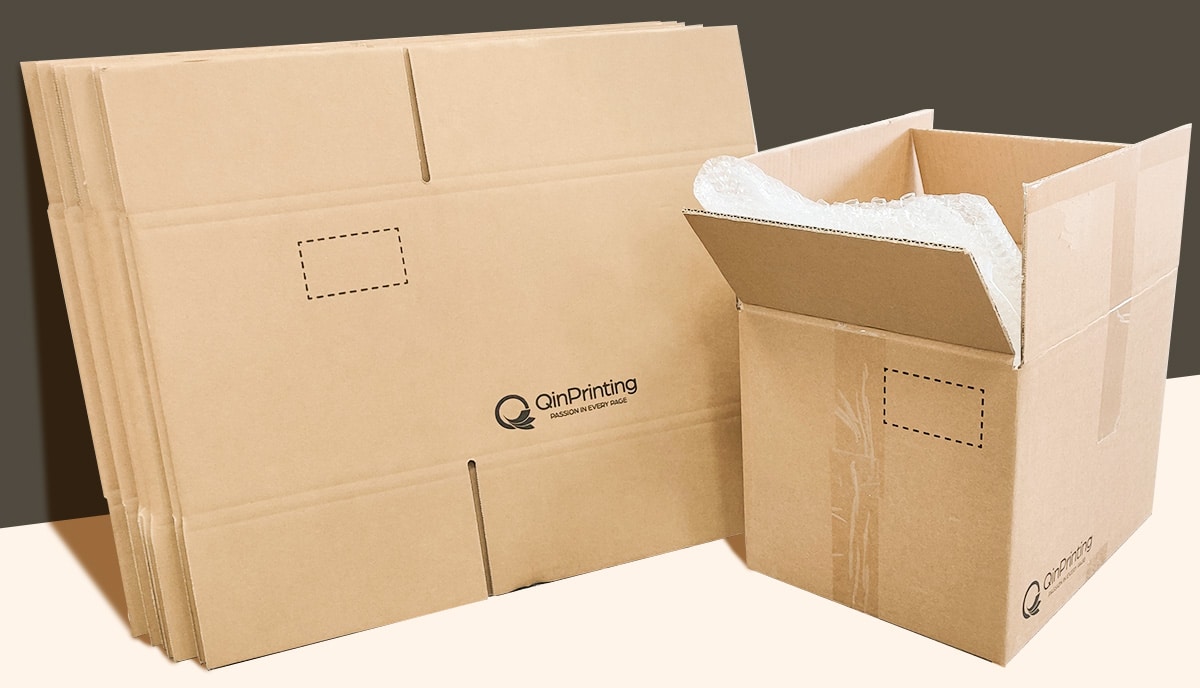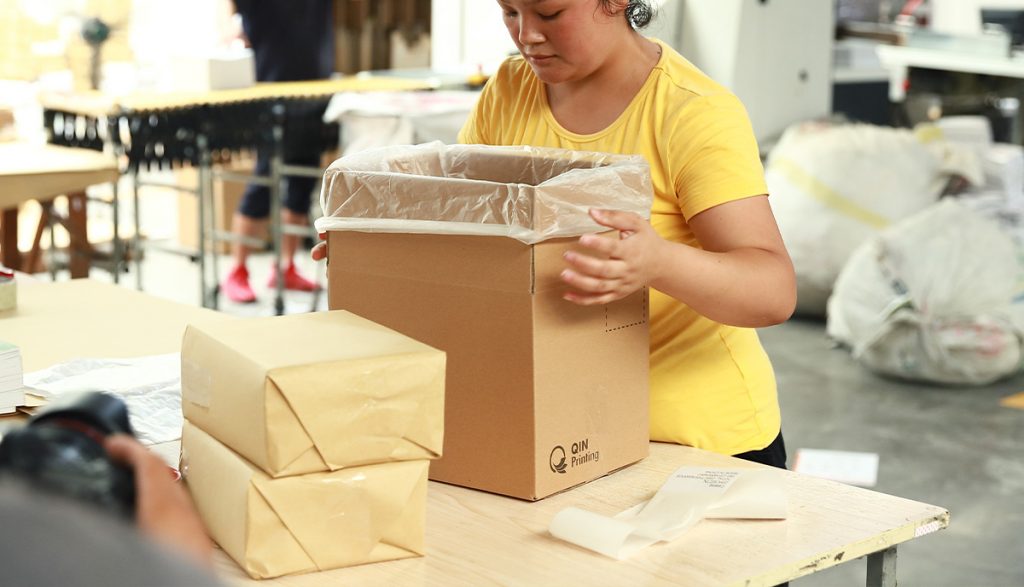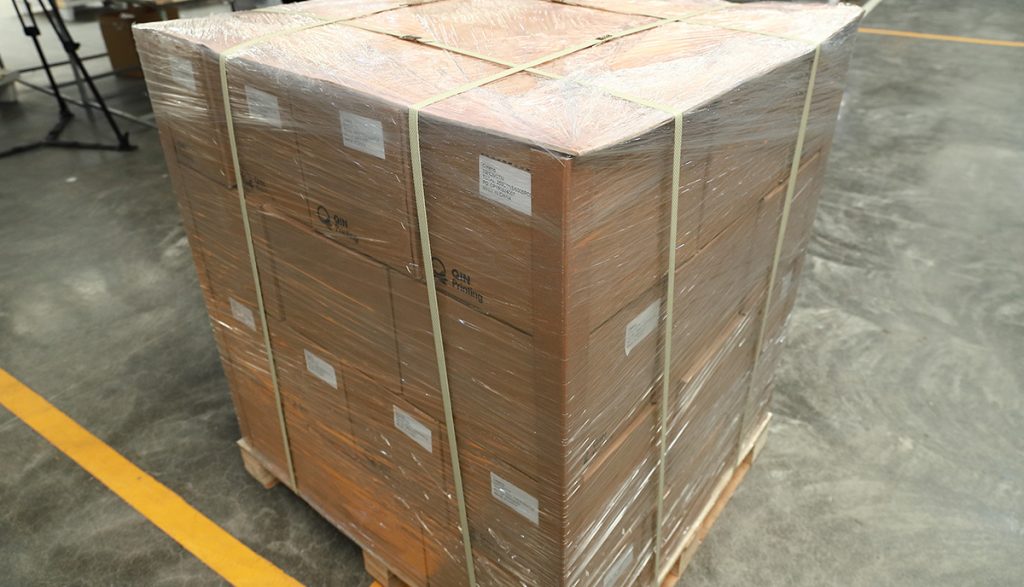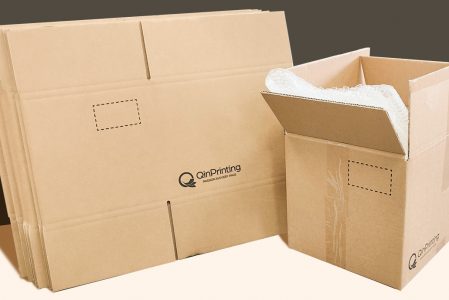Professional advice on how to pack and protect books for shipping from people who do it every day!

There are many situations in which you may need to know how to package and protect books for shipping. For example, if you're moving house, moving your office building, or you're a bookseller, a self-published writer or a small press that handles their own distribution. But as you may already have discovered to your cost, just piling books into cartons is never the best idea. At QinPrinting, — one of the world's most successful international providers of offset printing services to a global market — we know everything that's worth knowing about safely and efficiently packaging and protecting books for shipping. So, let's dive in with our top tips for making sure that your books always arrive at their destination in perfect condition.
Packaging materials for books
The essential components of a good packaging system for books need to make sure that the books have sufficient layers of protection, that they're well-packed with no room to slide, tip, or bend in transit, that the carton is sufficiently robust and not over-packed — books are heavy! — and finally, that the entire package is properly wrapped and sealed. We'll deal with each of these one at a time.
Wrapping paper
Ideally, each book should be individually wrapped in paper. The right paper for packing is an unprinted paper that's thick enough not to tear easily at the corners. Kraft paper — which can also be recycled — is often a good, cost-effective choice. We know it's common to use old newspapers when packing in domestic situations, but there's always the danger that newsprint might rub off on the covers of your books, and so we tend not to recommend it.
Bubble wrap and packing beans
Once your individually wrapped books are ready to be positioned in the carton — and we'll come to the carton next — it's important to make sure that there's no space left in the box. So, you need a lightweight, flexible, but protective filler. Bubble wrap — a sort of plastic sheeting made up of “bubbles” filled with air is an excellent option. Lining the carton with bubble wrap before putting the books in and then stuffing any loose areas with it, too, is likely to give significant results. You can also use polystyrene “beans” as fillers, but they can still move around a lot and so it depends on how much space in the carton you need to fill.

Packing cartons
If book packing cartons need to be anything, it's strong. So, a robust carton made from corrugated cardboard is a must. Once packed, it should be possible to lift the box without it ripping along the edges or tearing at the corners. Nor should there be any bulge underneath, otherwise you risk the bottom breaking during transit, which would be a disaster. Which brings us to the other vital consideration when choosing cartons for packaging and protecting your books for shipping. And that's size. Even small, softcover books can get very heavy quickly when they're stacked together in any great number. So, it's best to choose a relatively larger number of smaller boxes, rather than the other way around.
Getting the carton size correct guards against damage being caused not only to the books but also to anyone who has to lift and move the cartons at any stage on their journey. It also means they'll be easier to stack and less likely to shift about during transit.
Adhesive tape
You will need to tape your boxes closed. The choice of adhesive tape you make is very important. For example, Scotch and masking tape are not strong enough or sticky enough to do the job well. Choose specialist packing tape or duct tape. Ideally, your adhesive tape to package and protect books for shipping should also be water resistant.
Best practice techniques to package and protect books
How to pack books in boxes
As we've already noted, just bunging books in boxes isn't enough to make sure that they're well protected and safe in transit! You should individually wrap books in paper and then put them into a plastic bag to protect them from excessive moisture. It's also important to lay the books flat rather than standing up, even if you will fit fewer books into the box that way. If the books are standing upright for any length of time, they can bend and the spines can crack. If they are laid flat, they will remain in excellent condition. When packing the books, it's always advisable to leave at least 6 mm space between the outer books on the edge of the carton, which you then fill with bubble wrap. This provides sufficient protection should the books be dropped or knocked against a hard surface.
Labelling book boxes
We've already mentioned the importance of not over packing the boxes, so won't repeat that now, although its importance cannot be overemphasized. But once the cartons are packed, it's important to label them. You can either apply pre-printed sticky labels or write directly onto the carton with an indelible ink marker. If you're reusing cartons, don't forget to remove old labels and thoroughly cross out any previous written descriptions or instructions to avoid confusion.
If you are shipping your boxes internationally, it's a good idea to create labels that have a visual representation of the contents of the box in case anyone involved in handling or moving them during transit does not understand the language in which your labels are written. Adding written instructions (such as, “this way up only”) in several languages may also be a good idea. Your labels should certainly describe the carton's contents, directions for handling, any relevant product or courier codes, and the return address in case the package is mislaid.

How to tape and shrink wrap book boxes ready for transit
There are good ways and better ways to tape book cartons ready for transit. The first thing — apart from choosing the right tape, which we've already discussed — is to make sure that you double tape the underside of the carton, which is the side which will take most strain from the weight of books above it. Next, don't tape only the closures; for proper security, go the extra mile and tape up the edges and corners of the box, too. Finally, one last strip of tape around the middle circumference of the carton should do it. You might think this is excessive, but we've seen boxes that have burst open in transit, but never one that we taped like this!
If you are sending lots of cartons together — especially by sea freight — we also recommend shrink-wrapping them. Not only will it help hold them in place and stop them bursting open, but it adds an extra layer of water-proofing, too. We make books of paper, remember? They're absorbent, so you can't be too careful.
Pallet loading book cartons for transit
Whether you load your cartons on a pallet depends on how many cartons you have to ship and the type of transit you're using. If they're going by air, then we don't advise pallets as they add significant extra weight and, therefore, costs. Floor-loading suffices for air freight. But if they're going by land or sea and you have several dozen cartons at least, then loading them together onto a sturdy pallet — and shrink wrapping them all on the pallet — is an excellent precaution. It makes them easy for the shipping company to move mechanically, makes sure that they don't get separated, and adds little to the cost. But be careful that you never overload a pallet or stack them too high. A pallet must never be stacked higher than it is wide.

Choose your shipping company with care
Our final tip for how to package and protect books for shipping, is to research the shipping companies and choose one based on longevity in the business, an excellent reputation, reasonable pricing, insurance options, compensation in case of loss or damage, and experience with transporting books. We also recommend taking out additional shipping insurance if the books are of reasonable value.
We ship books every day!
While we don't offer third-party shipping services — sorry! — we ship books for our clients every day, and we ship them by land, air, and sea all over the world. So, if you're wondering whether you can trust our advice, you certainly can. While you can never guarantee what will happen to your shipment once you've waved it off, our experience shows that proper packaging and protection in the first place lowers the percentage of goods damaged on arrival to almost zero.
If you would like to work with us on your next printing project — whether that's books, magazines, catalogs, brochures, calendars, board games, or anything else — and you're concerned about shipping from China, please get in touch to discuss your needs. We're confident that we'll have a solution that will not only reassure you about the quality and speed of our global services, but also at an unbeatable price even compared with your local print shop. You can contact us by telephone, email, the online chat, Skype, or the contact form. We look forward to hearing from you!









